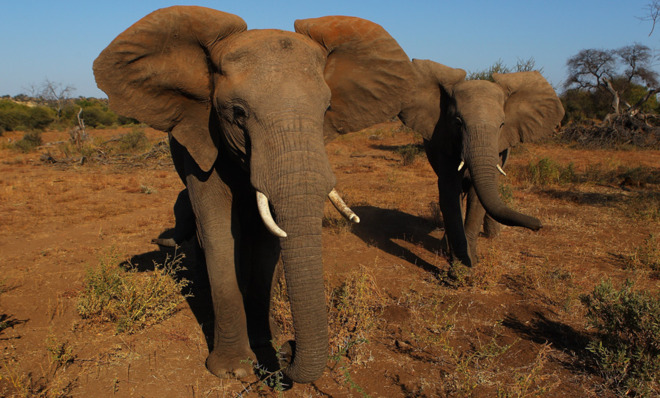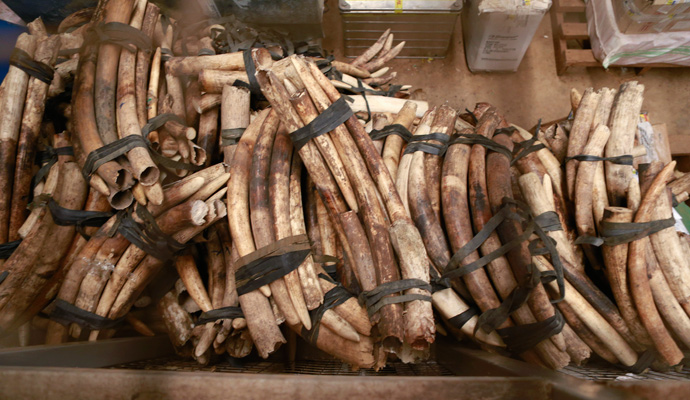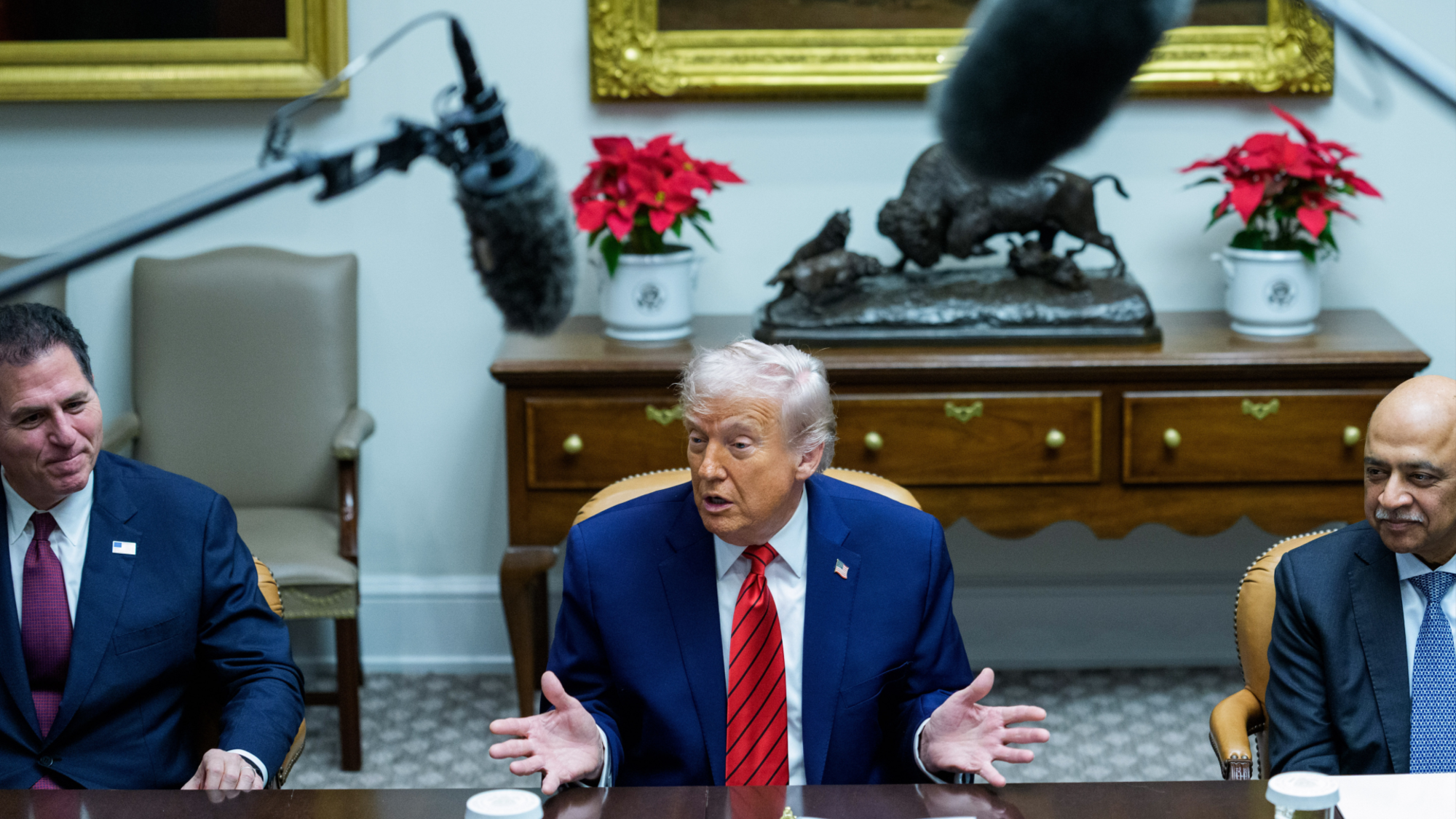The tragic price of ivory
Poachers are killing thousands of African elephants for their tusks. Can the ivory trade be stopped?

How extensive is the poaching?
Poachers are now slaughtering up to 35,000 of the estimated 500,000 African elephants every year for their tusks. A single male elephant's two tusks can weigh more than 250 pounds, with a pound of ivory fetching as much as $1,500 on the black market. The ivory is so valuable because all across Asia — particularly in China — ivory figurines are given as traditional gifts, and ivory chopsticks, hair ornaments, and jewelry are highly prized luxuries. "China regards ivory as a cultural heritage; they are not going to ban it," said Grace Gabriel of the International Fund for Animal Welfare. Many Chinese consumers don't realize that elephants must be killed for their ivory; in one survey, more than two thirds of Chinese respondents said they thought tusks grew back like fingernails.
What impact has the slaughter had on the elephants?
The Week
Escape your echo chamber. Get the facts behind the news, plus analysis from multiple perspectives.

Sign up for The Week's Free Newsletters
From our morning news briefing to a weekly Good News Newsletter, get the best of The Week delivered directly to your inbox.
From our morning news briefing to a weekly Good News Newsletter, get the best of The Week delivered directly to your inbox.
Elephants are highly intelligent, social creatures that live in matriarchal groups, and poaching has ravaged much of their social structure. The biggest tusks are found on the largest breeding males and on the oldest females, who lead the elephant troops. Where these animals are targeted and killed, elephant populations are reduced to leaderless groups of traumatized orphans huddling together. In the past year, even they are being wiped out, as some poachers have started dumping cyanide into watering holes, killing every animal that drinks there. Last year, poachers killed an estimated 300 elephants in Zimbabwe's largest park, Hwange, by lacing watering holes and salt licks with cyanide.
Who are the poachers?
Since the industry is illegal, those who run it largely come from criminal syndicates or terrorist organizations. Al-Shabab, the Somalia-based wing of al Qaida, raises $600,000 a month from poaching to fund its activities. Uganda's Lord's Resistance Army, the rebel group notorious for enslaving children, also raises money through poaching. "Poaching has become one of the most profitable criminal activities there is," says Peter Seligmann, the CEO of Conservation International. Chinese mafia organizations mostly do the purchasing and distribution of ivory after it's been obtained, selling it mostly in China and Southeast Asia but sometimes to markets in the U.S.
Why is the price so high?
A free daily email with the biggest news stories of the day – and the best features from TheWeek.com
When ivory became contraband, the supply got scarcer, but demand remained strong. In 1989, the international community passed a global ban on the trade in new ivory to stop the killing of elephants. Only ivory that had been harvested before 1989 could be sold, so the ivory carving industry in China crumbled, and with it the demand for tusks. Elephant populations rebounded — so much so that in 1999 the Convention on International Trade in Endangered Species (CITES), a global organization, decided to allow a "one-off" sale of pre-ban, stockpiled ivory to Japan. Then in 2008 it authorized another "one-off" sale, this time to Japanese and Chinese markets. The Chinese carving industry roared back to life, as the Chinese government licensed dozens of carving factories and retail outlets. Since there's no way to distinguish between pre-ban and new ivory, the illegal ivory trade has accelerated to meet the demand, and poaching is now worse than before the global ban.

What steps are being taken to stop poaching?
Under pressure from some member nations, CITES refuses to institute a complete ban on the ivory trade. But the U.S. is taking its own measures. The U.S. is the second-biggest ivory market, after China. In a symbolic gesture last fall, U.S. officials smashed 6 tons of contraband ivory, including tusks and carvings, that had been seized from smugglers or confiscated from unwitting tourists. And in February, the Obama administration announced it would change regulations to ban interstate sales of all ivory except certified antiques, limit elephant trophy imports to two per hunter, and end commercial imports of antique ivory.
Is China cooperating?
Following the U.S.'s ivory crush, the Chinese government destroyed 6 tons this January, and Hong Kong authorities say they will destroy their 30-ton stockpile, one of the largest in the world. Chinese environmentalists have also begun educating the public about the dire consequences of buying ivory. But it's a tough sell in a country where ivory has long symbolized wisdom and nobility. "With more disposable income in mainland China, many people are flaunting their wealth, and ivory is seen as a luxury product that confers status," says Tom Milliken of the Wildlife Trade Monitoring Network.
Why is the ban so hard to enforce?
There is no reliable way to tell pre-ban from post-ban ivory, or a real antique from a fake — in any country. "It's not like you walk into a store and find someone selling cocaine, which is illegal on its face," said Edward Grace, deputy assistant director for law enforcement at the U.S. Fish & Wildlife Service. In Chinese and U.S. shops alike, consumers simply assume that ivory trinkets are legal, and there is no way for law enforcement to prove that any particular item was made after 1989. Mary Rice, executive director of the Environmental Investigation Agency, says there's only one real solution: "We need to learn from history and permanently shut down all ivory trade — international and domestic."
Endangered Asian elephants
Asian elephants are even more endangered than African elephants — but the threat isn't poaching so much as human encroachment. The Asian species is smaller than the African, and none of the females and only some of the males have tusks. While some are hunted for ivory or meat, most of the Asian elephants taken from the wild are not killed, but domesticated for zoos, safari tourism, or timber hauling. There are only about 30,000 remaining wild Asian elephants, while 15,000 live in captivity. The wild herds in India, Sri Lanka, and Thailand are dwindling, too, as human development shrinks their habitat. Many populations are now cut off from migration routes and forced to inbreed.
-
 Denmark scraps letters and its iconic red postboxes
Denmark scraps letters and its iconic red postboxesUnder the Radar Danish posties say ‘farvel’ to 400 years of tradition but can Royal Mail weather the storm?
-
 What role will Trump play in the battle over Warner Bros. Discovery?
What role will Trump play in the battle over Warner Bros. Discovery?Today’s Big Question Netflix and Paramount fight for the president’s approval
-
 ‘The menu’s other highlights smack of the surreal’
‘The menu’s other highlights smack of the surreal’Instant Opinion Opinion, comment and editorials of the day